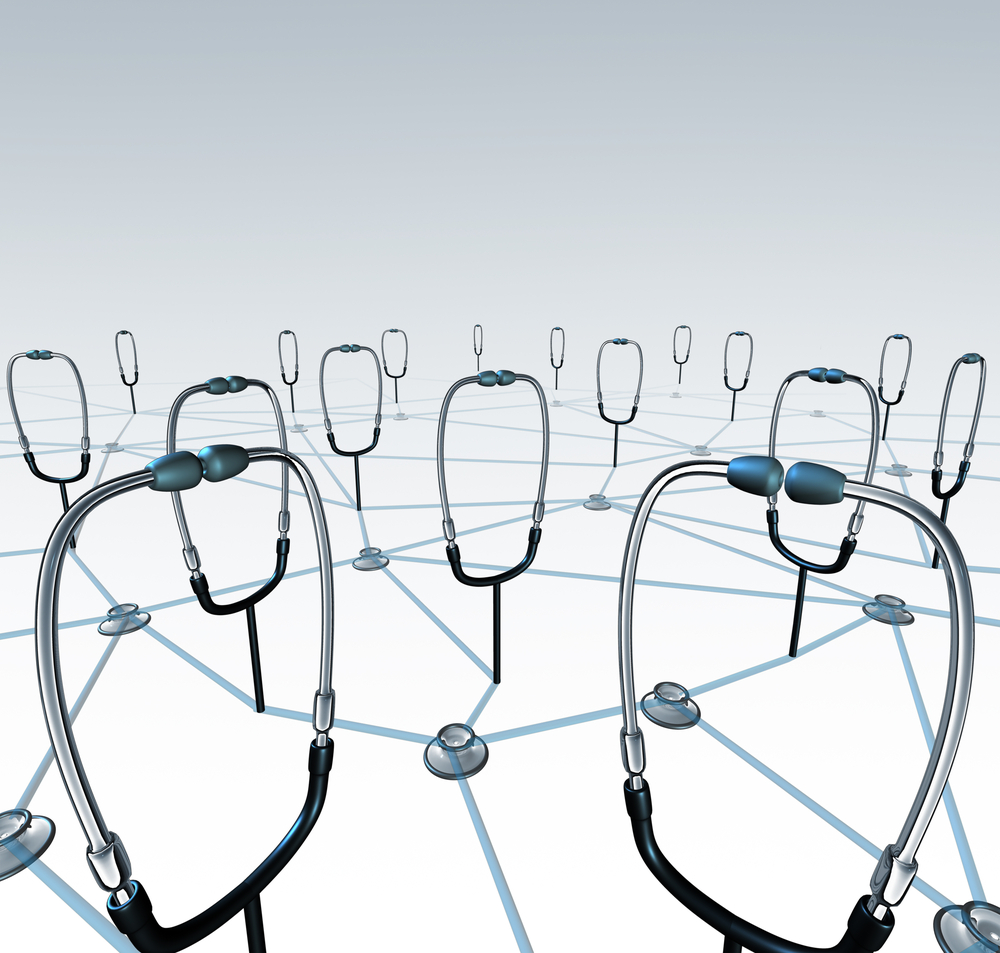The importance and relevance of data exchange standards in healthcare is hard to underrate. On January 21, 2021, a day after his inauguration, President Joe Biden signed one of his first executive orders, “to ensure a data-driven response to COVID-19 and future high-consequence public health threats''. Why the urgency? The COVID-19 health crisis has been a stress test for the US health system and exposed many issues, including interoperability gaps.
It showed that proper data communication, both within medical organizations and between them, was critical for providing better patient care. Adopting universal data exchange standards to connect and integrate various data systems is a great way to achieve that.
But it isn’t only times of crisis that warrant such an approach. Large or small, public or private, healthcare providers simply can’t afford poorly implemented data exchange practices. In this article, we’ll talk about different data standards and how using them can help your medical organization remove bottlenecks and save costs.
But first, let’s look at the reasons medical data standards exist.
The need for data exchange standards in healthcare

The 28th edition of Stedman’s Medical Dictionary includes over 107,000 terms and definitions. There are entire languages with smaller vocabularies. Isn’t that enough terminology to define every little thing in the healthcare industry, once and for all?
Not exactly.
When it comes to exchanging health data between departments or across institutions, there are so many variables at play that additional rules and descriptions are absolutely necessary. There can’t be any ambiguity when transferring and interpreting information about the patient's allergies or the procedures, materials, and medications required.
Comprehensive data standards in healthcare bring the industry one step closer to achieving seamless interoperability — from individual medical facilities to the national level. Without these standards, we’d still be in the stone age of data communication. Which would mean operating within disparate data silos, not having easy access to information from EHRs (Electronic Health Records), and spending too much time on manual tasks.
Even within a single institution, the IT system can be very complex and have multiple components that need to access clinical data. Here are some of the benefits your health facility can gain by adopting medical data exchange standards:
-
Data integration across all systems. Most hospitals use one or more of these: EMR (Electronic Medical Record), RIS (Radiology Information System), LIS (Laboratory Information System), and PACS (Picture Archiving and Communication System). Moving data between them would be a pain without strictly defined standards. Implementing them (along with an effective Hospital Management System) can help ensure error-free data communication and significantly reduce delays.
-
Improvements to decision-making. With all essential data available at their fingertips, doctors can make critical decisions faster, often saving patients’ lives.
-
Better compatibility and compliance. With relevant standards in place, you won’t have to worry about inconsistencies or gaps in compliance with laws concerning the privacy and security of patient information. You’ll also be able to easily exchange clinical data with other institutions that adhere to the same industry-proven norms.
-
Quicker and more reliable medical billing and claims processing. Standardized codes for medical terms and procedures help streamline the process of billing, which leads to properly substantiated claims and fewer rejections.
All of the perks listed above clearly demonstrate the importance of data standardization and data quality in healthcare. By planning and implementing it as soon as possible, you can save your medical institution’s resources, achieving higher patient satisfaction and a considerable increase in profits.
Now, let’s talk in more detail about the various data interchange standards in healthcare and the ones you should pay special attention to.
Key standards for health data exchange

So, how do you navigate a myriad of health data standards? One way to start is by learning about the categories they fall into, relevant to the primary purpose they serve.
Various SDOs (Standards Development Organizations) like HL7, CDISC, NCDPD, SNOMED, and others are working continuously to develop, revise, and amend medical standards. Here are the four main types of standards used in managing healthcare data:
-
Terminology standards. Created to communicate medical concepts with utmost precision, these are sets of codes, terms, and classifications clinicians use on a daily basis. Some of the most popular standards of this kind include CPT (Current Procedure Terminology), ICD-10 and ICD-11 (International Classification of Diseases), and NDC (National Drug Code).
-
Content standards. When hospital systems convey data or make queries via messages, they rely on special standards to describe the structure and internal organization of clinical data. These are represented by HL7’s V.2 and V3, as well as C-CDA (Consolidated Clinical Document Architecture).
-
Privacy and security standards. The Health Insurance Portability and Accountability Act (HIPAA) governs all aspects of the privacy and security of electronic patient data in the US. Compliance with HIPAA’s Privacy Rule and Security Rule is mandatory for healthcare providers in the US.
-
Data exchange standards. These sets of rules define the electronic encoding of messages that transport information between computer systems. They facilitate the exchange of digitized patient data and provide a solid foundation for interoperability in healthcare. FHIR (pronounced “fire”) is currently one of the most recent and widely used data exchange standards, followed by Direct and others.
Now that you have a better understanding of the types of health data standards and their functions, we can focus on the ones shaping the IT landscape of today’s healthcare.
CDA & C-CDA
Clinical Document Architecture (CDA) and C-CDA (the first “C” stands for “Consolidated”) have both been developed to help healthcare providers exchange medical documents in electronic format.
CDA is a set of standards that describe the structure and semantics of clinical data in XML (Extensible Markup Language) for easy exchange. The standard covers documents like:
-
Consult Notes
-
Diagnostic Imaging Reports
-
Discharge Summaries
-
History and Physical
-
Operative Notes
-
Procedure Notes
-
Continuity of Care Documents (CCDs)
-
and many more.
C-CDA is a framework, a library of templates used with specific document types. HL7’s official website describes CDA as a kitchen with lots of raw ingredients, while C-CDA represents ready recipes that allow for less flexibility, but also limit possible errors. Acting as an implementation guide, C-CDA harmonizes many previous standards, such as HL7’s Health Stories, HITSP (Healthcare Information Technology Standards Panel) C32 specification, certain parts of IHE (Integrating the Healthcare Enterprise) Patient Care Coordination, and CCDs.
Direct
Direct is a popular standard for the secure exchange of health data over the internet.
The simplest way to describe Direct is by comparing it to a dedicated email provider that handles the encoding and decoding of your medical data, along with attaching digital signatures. You actually need a nationwide accredited HISP—Health Information Service Provider—to be able to use the Direct protocol. The standard supports push notifications for admissions and discharges, automated patient summaries, bidirectional messaging, and referrals.
Another similarity to email is the fact that the sender needs the recipient’s Direct address to send the encrypted message. Many clinicians consider this a drawback, as those addresses take time to set up and locate.
Even though the Direct standard does facilitate interoperability and has been gaining traction, it has several limitations that slow its adoption among healthcare institutions. It requires deeper technical knowledge than other medical data exchange standards, relies on third-party providers, and has problems with certain message types.
HL7 v2
HL7’s v2 messaging, now superseded by V3, is the organization’s first information exchange standard to become ubiquitous in the healthcare industry. It contains structural and semantic specifications for medical messaging that cover every need of a hospital IT system, from clinical to administrative, including logistical and financial processes. HL7 v2 was designed mainly to support a central patient care infrastructure, with less focus on exchanging data between disparate systems.
According to the organization’s website, 95% of US healthcare institutions use HL7 V2.x in their information systems, with 35 more countries that have adopted the standard to various extents.
Fast Healthcare Interoperability Resources (FHIR)
Health Level Seven International developed this health data exchange standard in 2012, in response to increasing amounts of data and the growing popularity of mobile devices.
The standard’s authors focused on creating a tool that would be eagerly adopted by software vendors and developers. Utilizing the incredibly popular HL7 v2 as its base, FHIR adds technologies like XML and JSON that IT specialists are already familiar with. The creators use “resources” as building blocks that can be combined in order to cover most of the possible use cases. Due to its flexible data definitions, the method allows for a transition from a document-based approach to sharing discrete data elements.
Another advantage of adopting FHIR is the ability to make use of its API (Advanced Programming Interface) to develop custom-tailored interoperability solutions. This is one of the main reasons FHIR has been gaining popularity and is used in most major EHRs in the US healthcare sector.
As you may have noticed, FHIR offers a great feature set and a lot of flexibility when it comes to implementation. Let’s stay on the subject and find out more about this data exchange standard.
Read also: Benefits of Using APIs in Healthcare
Why FHIR is important

It’s no coincidence that FHIR is rapidly becoming the most popular of all the data standards used for clinical data exchange in the US. The list of its benefits speaks for itself.
It’s everywhere
Thanks to the standard’s popularity, more software developers and EHR/EMR vendors are engaging with FHIR every day, which results in deep expertise and an array of available solutions. This means you’ll have no problem finding a software product that works best for you—or building one from scratch.
It’s versatile
FHIR’s standardized APIs ensure compatibility and guarantee that applications based upon them can be easily used in a number of scenarios. The reusable nature of APIs in general also promotes the implementation of the standard, saving resources in the development process.
FHIR consists of modules that can be combined to cover many use cases, with a design that allows integration into mobile apps and cloud solutions of any scale—from small private providers to national institutions.
It’s future-proof
The standard is built with flexibility in mind, so as to reflect changes in the industry’s requirements. While FHIR is an excellent choice for upgrading legacy systems, it can easily absorb new and emerging standards, keeping the overall data logic intact.
It’s open-source
FHIR is more than a set of rules. It’s also a vibrant community of health IT experts ready to invest their time and effort into addressing the challenges of health data exchange. The open-source development model promotes the culture of creating more free components in the FHIR ecosystem. What does this mean for you? Less time and money spent on creating your own solution, of course!
It’s mature
Unlike several other standards for health data exchange, FHIR has a solid background, being based on one of the most established standards in the field, HL7 v2. The years of work put into developing FHIR as a standalone set of specifications have not been in vain. Since its creation in 2012, the standard has reached maturity and is being widely adopted in the industry.
It might seem that FHIR and other health data exchange standards are the cure for the current interoperability issues in healthcare. But obstacles stand in the way of adopting them.
The challenges of implementing health data standards

While SDOs are working tirelessly on improving and perfecting data standards, there are still many factors that impede their implementation.
Data fragmentation
Electronic Health Information (HIE) systems have already replaced faxing sheets of patient data in many states. However, the information contained in these systems is often incomplete or missing. For instance, California Immunization Registry (CAIR) lacks connectivity with EHRs to provide immunization data in emergency situations. The poor exchange of records between behavioral, social, and public health institutions limits the efficiency of care provided to patients with special needs.
Poor backward compatibility
FHIR and other modern data exchange standards are extremely flexible. But older systems store data in formats based on a different ideology, and it’s often impossible to automate the transfer of information from those legacy systems into a new one. Several projects aimed at addressing this issue are in the works: The Da Vinci Clinical Data Exchange (CDex) and v2-to-FHIR are two examples.
Complex data exchange regulations
Even with the seemingly transparent guidelines from HIPAA, maneuvering between the hidden rocks of data exchange laws isn’t easy. There is a lot of ambiguity and confusion when it comes to interpreting federal and state legislation on personal data. The process of synchronizing healthcare data collection standards (and those of transferring that data) with various laws can be slow and tedious. Hopefully, lawmakers will promptly recognize the need for change and take action, updating the regulations.
In addition, the Global Consortium for eHealth Interoperability organization is working with governments and health ministries to facilitate the implementation of health data exchange standards.
The need for testing and conformity assessment
The process of developing new data exchange standards requires real-life feedback to stay relevant and keep moving in the right direction. The FHIR community holds regular workshops, called HL7 FHIR Connectathons, where participants can join efforts in developing and testing.
Overall, the benefits of implementing the standards of data exchange far outweigh the challenges we’ve listed above. It’s also true that transitions like this don’t happen overnight. But rest assured—the resources you spend on adopting the current standards like FHIR are among the best investments a medical organization can make today.
The next move to take
If you’re still contemplating whether or not your healthcare organization should use the latest data exchange standards in the industry—stop! It’s time to take action.
The changes in healthcare data communication are irreversible. The rising popularity of mobile apps, and the need for access to patient data from any point in the country or abroad, are pushing the industry forward. The future of healthcare is impossible without a seamless flow of data, within hospital systems and across national healthcare organizations.
Whether you’re moving from a legacy system to a new one or need a custom-built solution for your practice management, Demigos is ready to offer help. With our extensive knowledge of healthtech and numerous successful deliveries, Demigos is your perfect software partner for a project of any scale and complexity.
Get in touch with us now, and let’s get to work!






